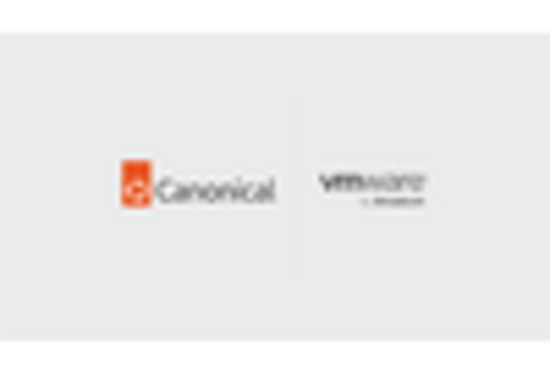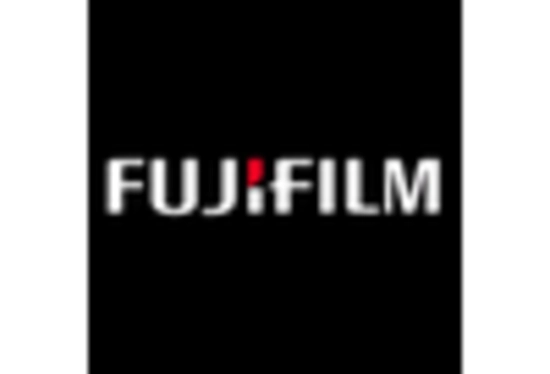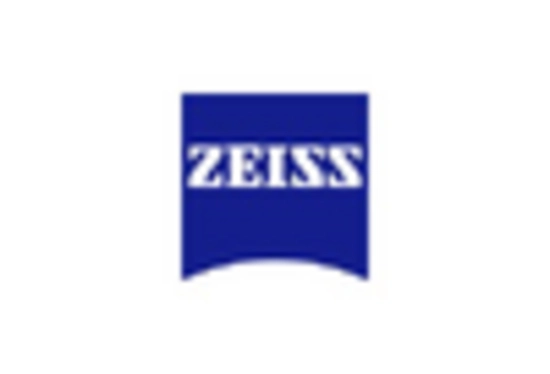Growth of Independent Filmmaking
The Cinema Lenses Market is benefiting from the growth of independent filmmaking, which has gained momentum in recent years. As more filmmakers venture into creating content outside traditional studio systems, there is an increasing demand for affordable yet high-quality cinema lenses. Independent filmmakers often seek equipment that provides professional results without the hefty price tag associated with major studio gear. This trend has led to the emergence of budget-friendly lens options that do not compromise on performance. Market data suggests that the segment catering to independent filmmakers is expected to expand significantly, with a projected increase of 7% in lens sales over the next few years. This growth reflects a broader democratization of filmmaking, where access to quality tools is more attainable.
Increased Demand for Versatile Lenses
The Cinema Lenses Market is witnessing a surge in demand for versatile lenses that can adapt to various shooting conditions and styles. Filmmakers are increasingly seeking lenses that offer a wide range of focal lengths and apertures, allowing for greater creative freedom. This trend is reflected in the growing popularity of zoom lenses, which provide flexibility without compromising on image quality. According to recent market data, the segment of zoom lenses is expected to account for over 40% of the total market share by 2026. This shift towards versatility is driven by the need for efficiency in production, as filmmakers aim to minimize equipment changes during shoots. Consequently, manufacturers are focusing on developing multi-functional lenses that cater to diverse cinematic requirements.
Rise of Smart Features in Cinema Lenses
The Cinema Lenses Market is increasingly incorporating smart features that enhance the filmmaking experience. These features include built-in image stabilization, electronic focus control, and connectivity options for real-time monitoring and adjustments. Such innovations not only improve the usability of lenses but also streamline the production process, making it more efficient. The integration of smart technology is particularly appealing to content creators who require quick adaptability in dynamic shooting environments. Market analysis indicates that lenses equipped with smart features are projected to grow by approximately 6% annually, reflecting a shift in consumer preferences towards high-tech solutions that facilitate creative expression. This trend underscores the importance of innovation in maintaining competitiveness within the Cinema Lenses Market.
Emergence of Virtual Production Techniques
The Cinema Lenses Market is experiencing a paradigm shift with the emergence of virtual production techniques, which blend live-action and digital environments. This innovative approach requires specialized lenses that can effectively capture high-resolution images while integrating seamlessly with digital backgrounds. As filmmakers adopt these techniques to enhance storytelling, the demand for cinema lenses that support virtual production is likely to rise. Recent Market Research Future indicate that the segment focused on virtual production is anticipated to grow by approximately 8% annually, driven by advancements in technology and the increasing popularity of hybrid filmmaking methods. This trend highlights the necessity for lens manufacturers to adapt to new production methodologies, ensuring their products meet the evolving demands of the industry.
Technological Advancements in Cinema Lenses
The Cinema Lenses Market is experiencing a notable transformation due to rapid technological advancements. Innovations in optical design and manufacturing processes have led to the development of high-performance lenses that offer superior image quality and versatility. For instance, the introduction of advanced coatings and materials has enhanced light transmission and reduced flare, which are critical for filmmakers. Additionally, the integration of digital technologies, such as electronic aperture control and autofocus capabilities, has made lenses more user-friendly and efficient. As a result, the market is projected to grow at a compound annual growth rate of approximately 5.2% over the next few years, driven by these technological improvements that cater to the evolving needs of cinematographers.

















Leave a Comment